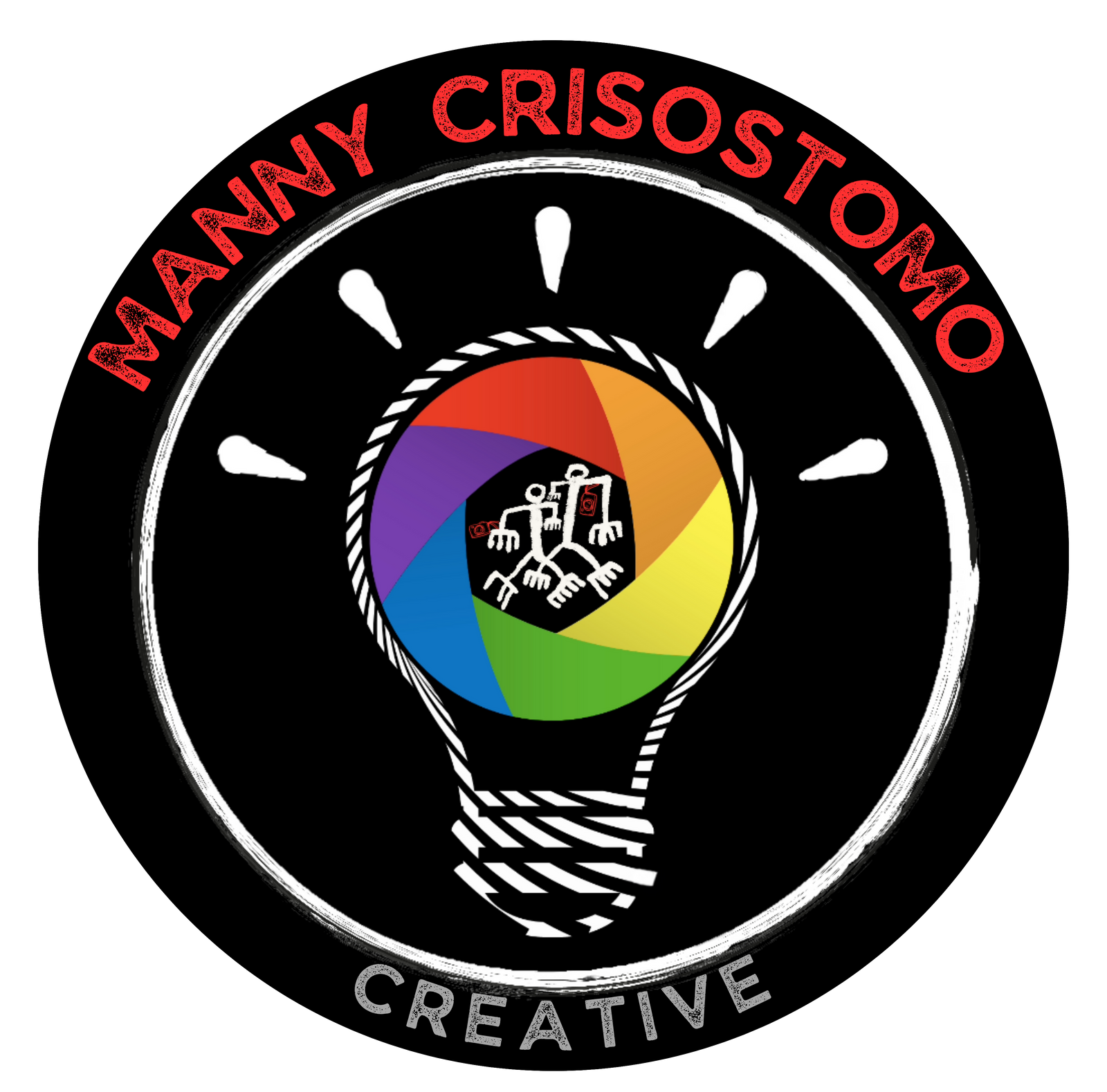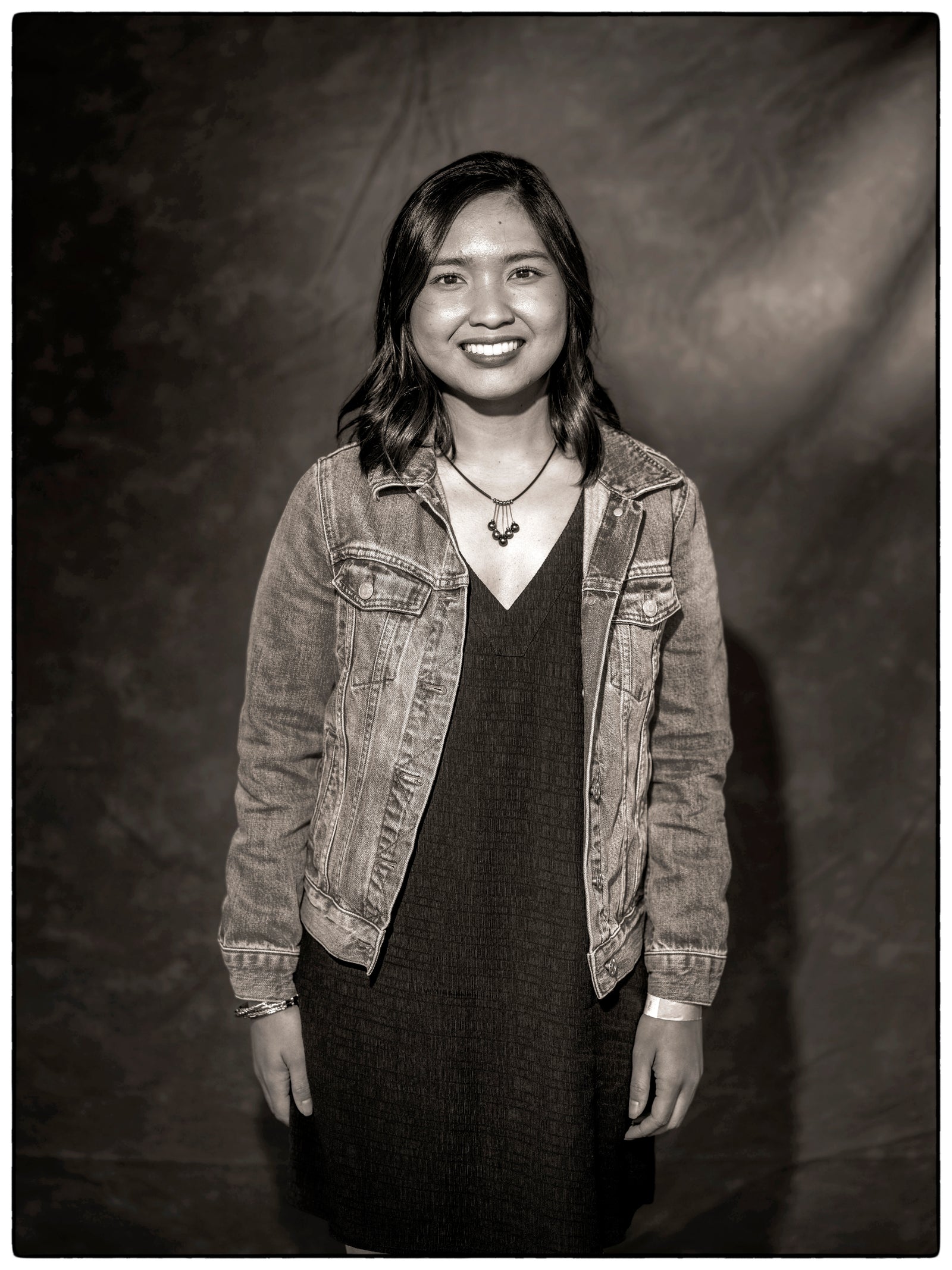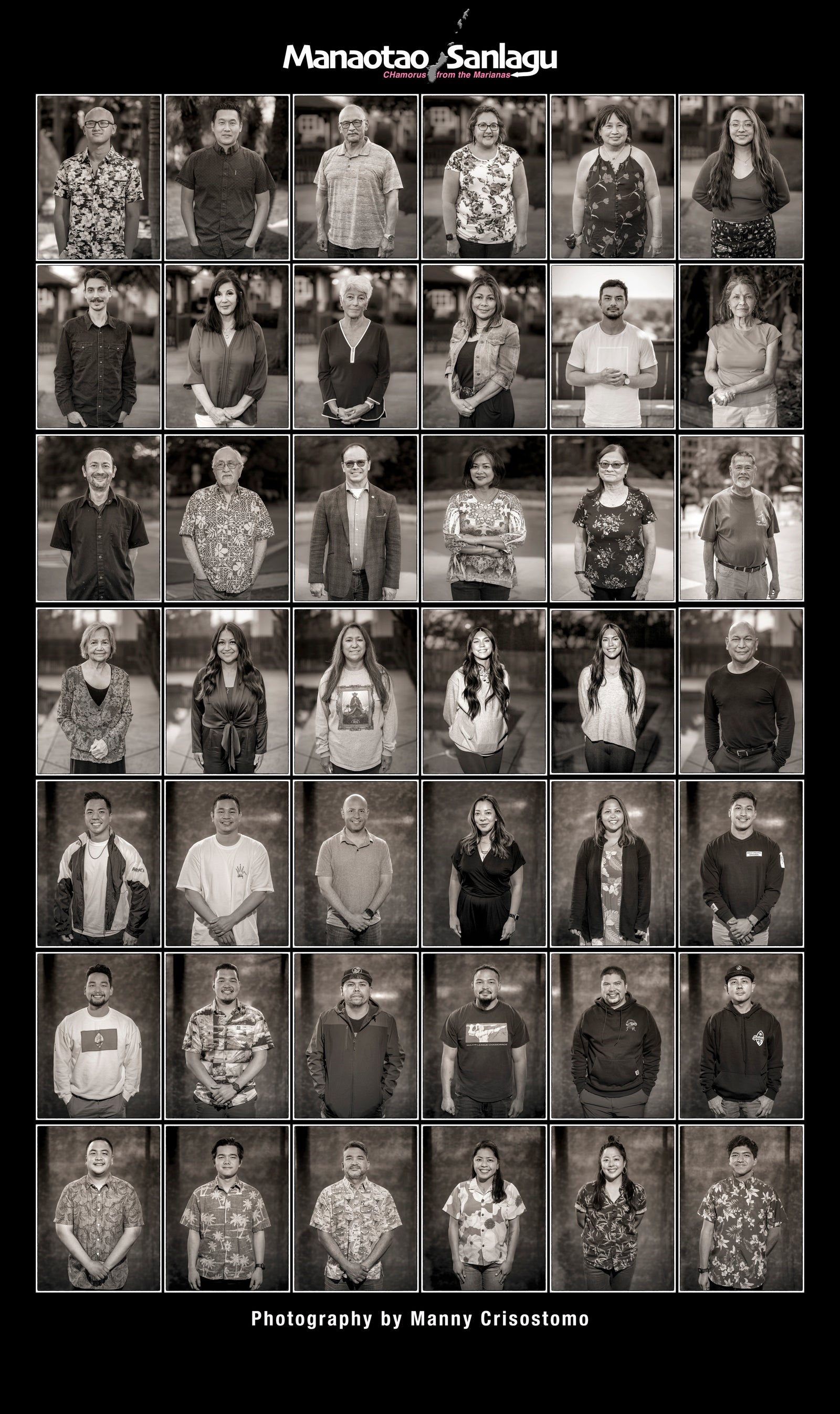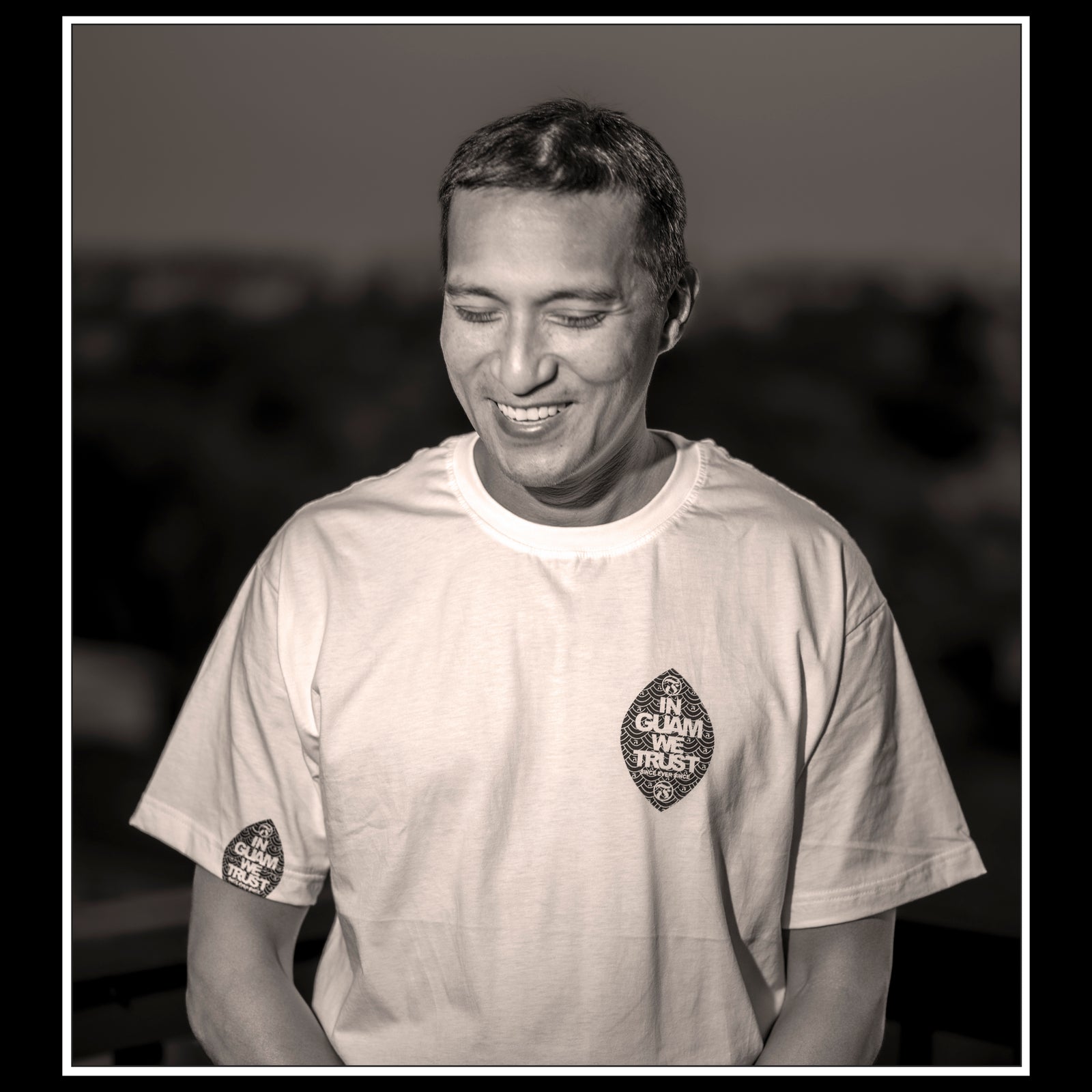By Manny Crisostomo
On an overcast northern California day with whales breaching and dolphins leaping between surfers, the blowing of the kulo ushers the start of dancer and choreographer Lisa Tenorio’s MFA thesis concert, a homage to her CHamoru heritage and the connection of islanders to the ocean she titled “The Stirring Place: The Convergence of the Ocean and the Dancing Body.”
Praying and beseeching the spirit of her father, grandmother and sainas to guide her, Tenorio and her cast of six dancers, five singers and one percussionist, all dressed in scarlet red and carrying bamboo sticks, descend down a bluff moving, dancing and chanting toward the sandy shore of Montara State Beach, 16 miles south of San Francisco, during a 25-minute performance for 60 audience members.

“It is important to me that the performance be facing the Pacific Ocean and in the direction of the island, it was my attempt to reconnect,” the 54-year-old former Barrigada resident said. “Technically it was a performance but I felt it was my offering, it was what I had at the time. It was my offering to my culture, it was my offering to my dad.”
Her father, Juan Cruz Tenorio, familan Korason from Saipan, is her enduring connection to CHamoru culture.
He passed away in 2016 but she said his spirit guided her throughout the two-year process of researching, choreographing and performing “The Stirring Place” and her 60-page written thesis necessary to complete the Master of Fine Arts in Dance: Creative Practice degree at St. Mary’s College of California, which she received two years ago.

Lisa Tenorio grew up in Guam but recalls family trips to Saipan where her uncle, Froilan Tenorio, was governor.
Her grandfather’s brother was Jose Tenorio, who turned a small mom and pop store into Joeten Enterprises, Inc., a multimillion-dollar family-owned conglomerate in the Northern Marianas,where the family matriarch and her grandmother, Rita Duenas Cruz Tenorio, lived.
“Nang’’ imparted i kustumbren CHamoru to the grandkids, and Lisa Tenorio’’s mother, Charlene Dubiel Tenorio, who is originally from Iowa, learned to make really good shrimp kelaguen.
“My personal connection to the ocean comes from having grown up there, visiting these various different places, especially the Grotto,” Lisa Tenorio recalled.
“Combination of fear and fascination, like I know there is something special here and it’s terrifying and beautiful all at once,” she said of the Saipan Grotto, a large sea cave with a partially collapsed ceiling containing three underwater passageways and considered one of the best caverndive spots in the world.
Her experience of the Grotto and collective memories of her grandmother and father’s CHamoru culture tutelage was the starting point for her thesis, but she struggled early on.
Visits home
“I really felt undirected here,” she said while home in Concord in the Bay Area. “I am in this time and space away from the island while I was writing and choreographing.”

So she took not one but two trips home to the source, and sought out “people who spend their lives safeguarding the culture.”
Those she spent time with included Master of CHamoru Chant Leonard Iriarte, who researches and composes CHamoru chants through the chant group I Fanlalai’an, Oral History Project; suruhana Bernice Nelson of Amot Farm, a nonprofit dedicated to the art of traditional CHamoru medicine; and Master of CHamoru Dance Frank Rabon, who formed the dance group Taotao Tano’ with which he explores interpretations of CHamoru dance.
“Their words offer substance of a more mystical, esoteric nature,” she said. “It reached beyond my intellect and connected to my intuition.”










